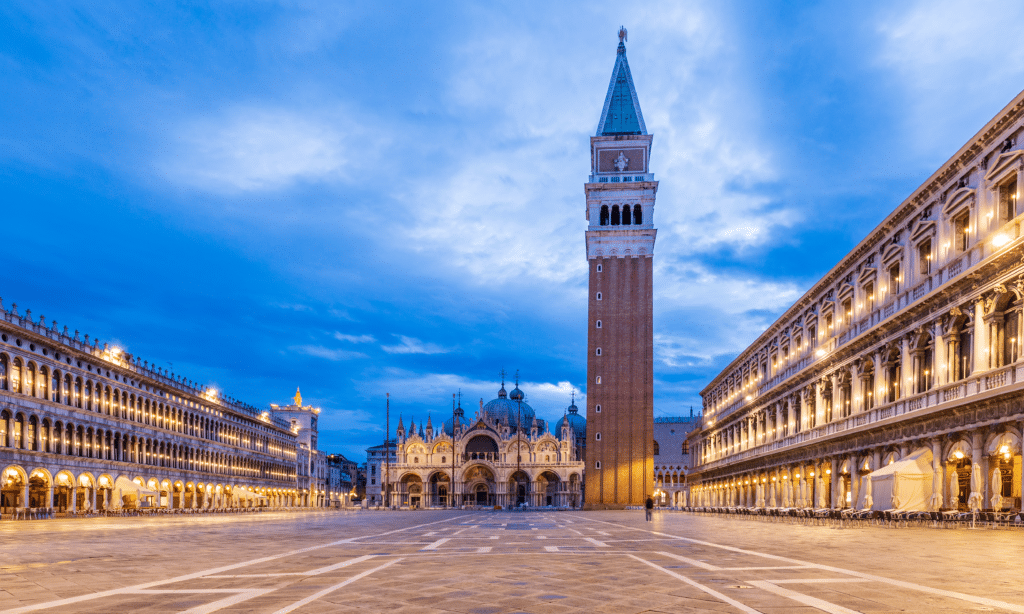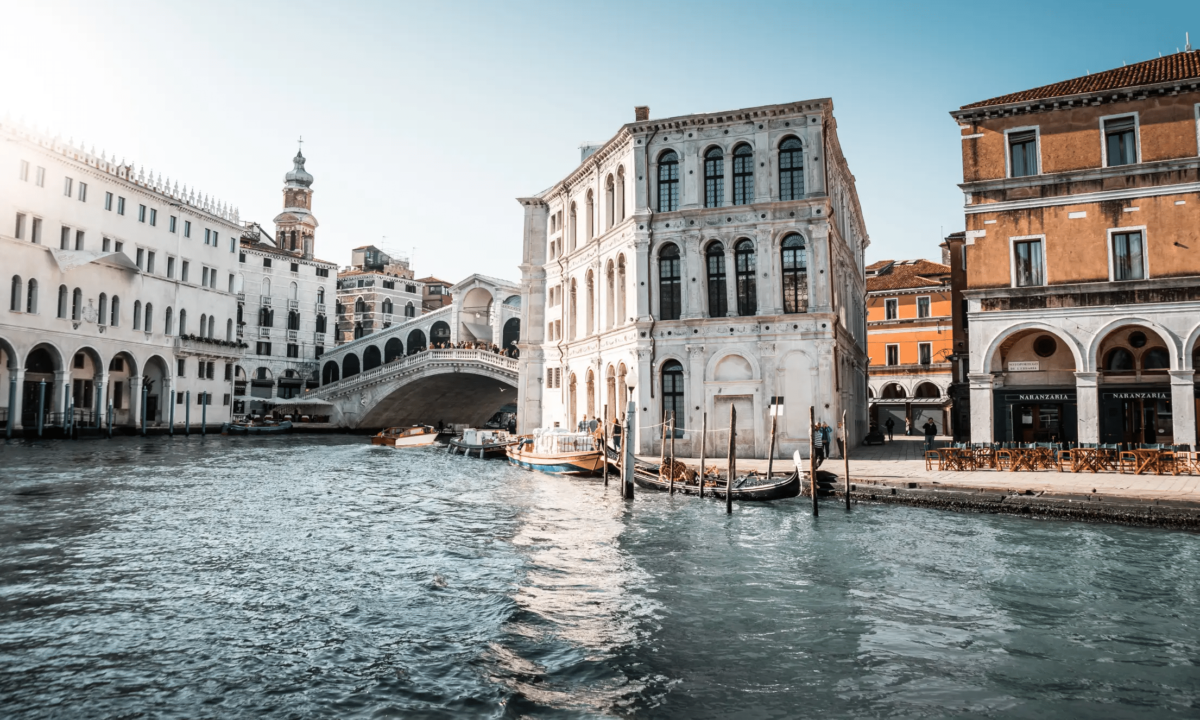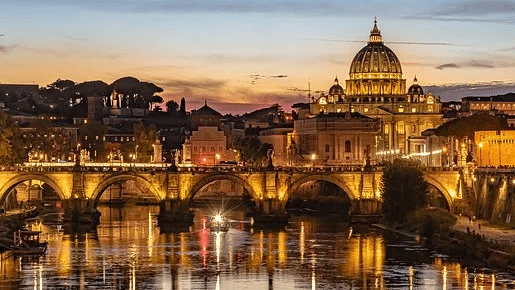In this article, we will show you the main Tourist Attractions in Venice. Firstly, we will focus on what to see, and secondly, we will focus on what to do in Venice. In the end, we will share some helpful tips with you. So, stay with us if you want to travel to this magnificent city.
Fair use:please read our legal disclaimer document for more information about our disclaimers.
But, if you wish your photo to be removed, despite the fair use, please get in touch with us first, and we’ll remove it without hesitation.
The main tourist attractions in Venice
“Planning a trip to Venice? Let me guide you through the city known for its romantic charm. Start at the station or Piazzale Roma, follow the standard route, or let your instincts guide you. In this article, we will discover the top places to see in Venice.
Note: If you want to see the Perfect day trips from Venice, we suggest reading our related article.
St. Mark’s Square
When we talk about The Main Tourist Attractions in Venice, this is the place that comes into our minds first. Firstly, it is one of the symbolic places of the Serenissima. Say San Marco, and you know you’re talking about Venice. It is the most prominent place in the city, surrounded by works of inestimable value that envy the entire world: the Basilica, the bell tower, and the Doge’s Palace. Today, there are also expensive bars where you can sip a coffee and admire the grandeur of an all-Italian architectural masterpiece.
St. Mark’s Square was originally a large vegetable garden. Today, it remains the most significant space in Venice, otherwise divided into small alleys.
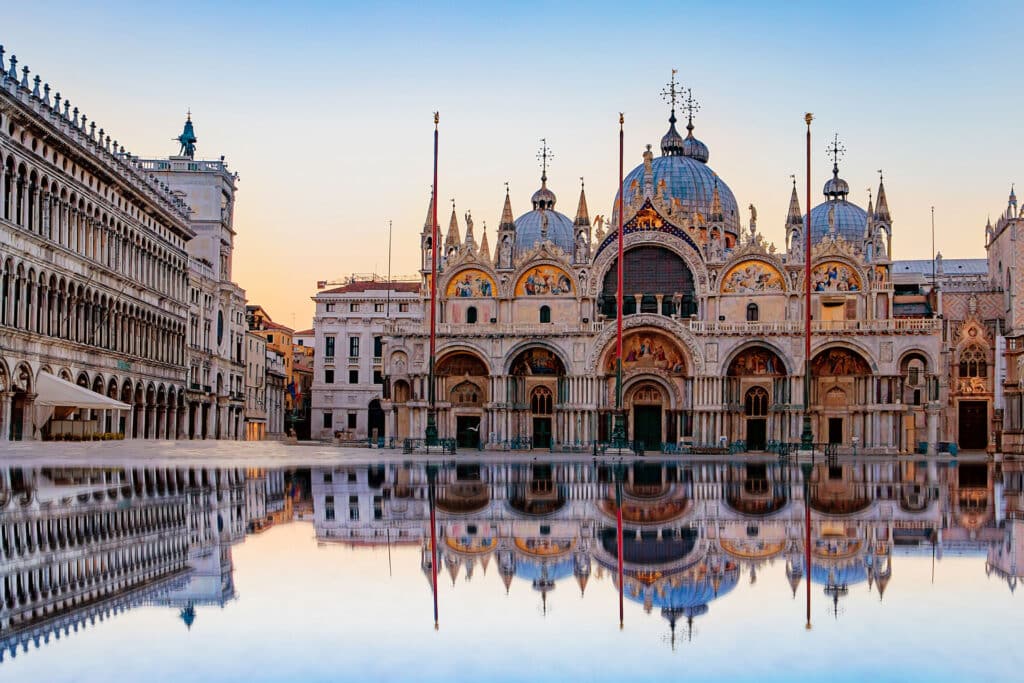
©tuscanynowandmore.com
St. Mark’s Basilica
This magnificent basilica is second on our list of the main tourist attractions in Venice. Embellished with gold mosaics, it is a true treasure and an original testimony of Roman, Byzantine, and Venetian culture that preserves various Far East artifacts and leaves everyone speechless. So, it is only possible to enter after wandering through the narrow streets and arriving at the square. In the Museum of the Basilica, you can see the Four Horses of St. Mark, the sculptures from Constantinople that were on the terrace of the Basilica until the end of the eighties.
St. Mark’s Bell Tower
First, you visit the square and enter the Basilica. In that case, you can only miss the visit if you climb the splendid bell tower of St. Mark’s—symbol, among others, of Venice and a privileged point of view for any tourist.
It is also astonishing to climb up to the bell tower, built at the beginning for sighting and defense functions, at a height of 99 meters.
Doge’s Palace
It preserves all the history of Venice, which in the past was an actual bridge between West and East. It tells of its historical, cultural, and political importance. The Doge’s Palace was the seat of the Doge at the time of the Serenissima. His style has undergone changes and restorations following fires that have recalled significant restorations.
In a building that is nothing short of majestic, it is the emblem of Gothic-Venetian. Today, it is the headquarters of the Superintendence for Environmental and Architectural Heritage of Venice and the Lagoon. Since 1996, it has been part of the city’s Civic Museums system.
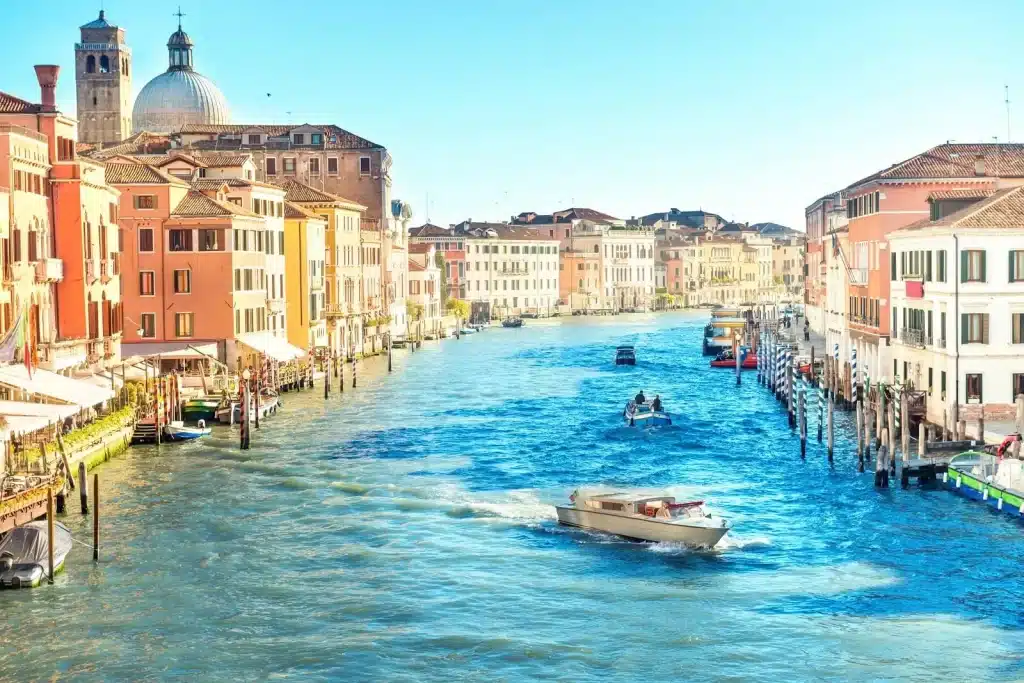
©visit-venice-italy.com
Grand Canal
Who hasn’t dreamt of taking a gondola?-ride here and spend romantic hours hugging and kissing his loved ones? But primarily, it is the central transport axis of Venice: four kilometers long, it divides the city’s historic center in two, and for all Venetians, it is simply the Canalazzo.
It is sometimes intense, and the S-shaped canal is much older than the city. Today, it is worth traveling by Vaporetto or gondola, both day and night, taking the Grand Canal tour leading from the Santa Lucia railway station to St. Mark’s Square. So you can admire all the beauty of the buildings that overlook it and the city from a different perspective.
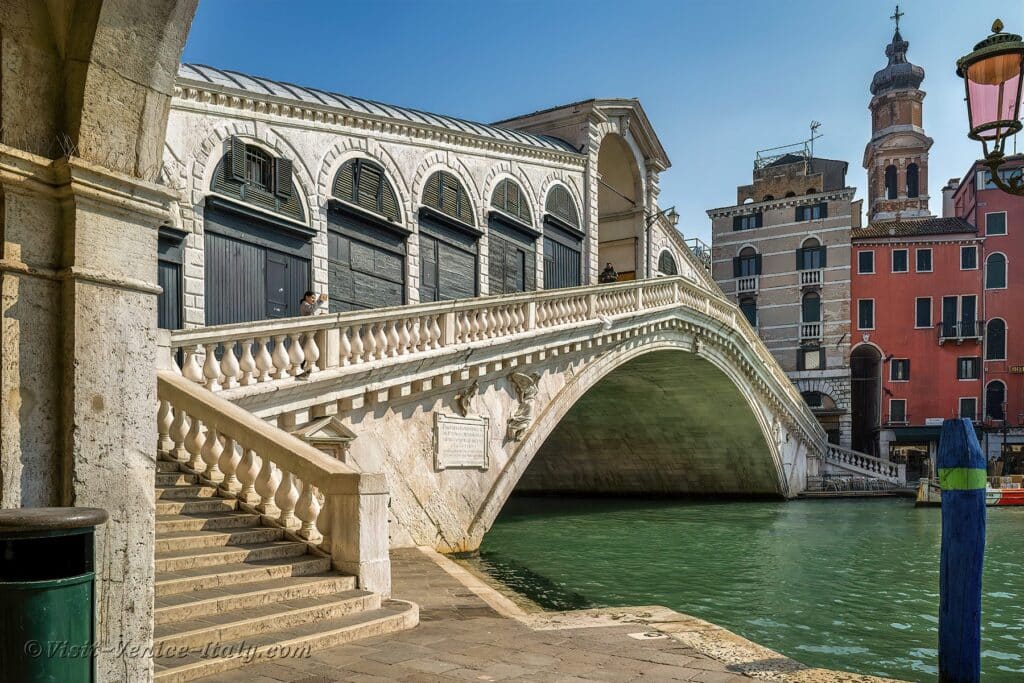
©sightseeingtoursitaly.com
The Rialto Bridge
And we went to another famous Tourist Attraction in Venice. Another undisputed symbol of the city and one of the most crowded spots in all of Venice, where taking a photo overlooking the Grand Canal sometimes becomes almost impossible. The all-white bridge, covered by arches, is only the most famous among those scattered throughout the city, essential to connect the different areas that have become true masterpieces and a characteristic note of the Serenissima.
Rialto was built in 1593 to replace the ancient wooden bridge that allowed passage to the Rialto market.
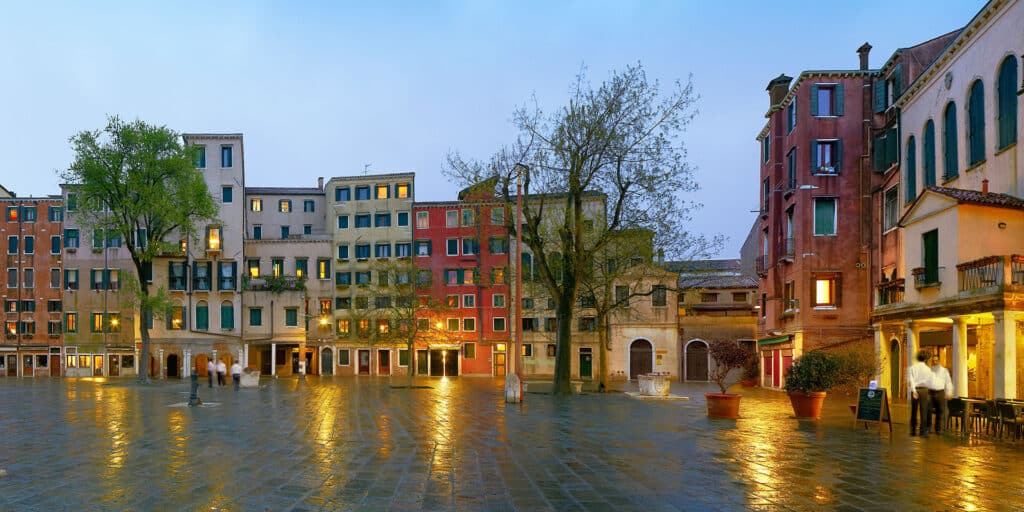
©Creator: Premium Stock Photography GmbH / Alamy Stock Photo
Copyright: Credit: Premium Stock Photography GmbH / Alamy Stock Photo
Jewish Ghetto
In the Casaregio district, the Jewish Ghetto is worth visiting to get out of the overly touristy circuits and discover lesser-known corners of Venice that contain great charm.
Here, there are five synagogues, a museum, the castor, and houses that develop in height, a singularity of this district where the Jews of Venice lived for almost three centuries. Today, the Ghetto is still home to 500 members of the Jewish community.

© Jenifoto406/Dreamstime.com
Island hopping
You must take advantage of the tour of the Venice islands that can be reached by Vadetto: Burano, Murano, and Torcello. The first is famous for being the island of lace and colors, where each house is different from the other and has heated breakfasts that capture the eye and release a wonderful kaleidoscope.
On the other hand, the second is the only one of glass, of the skilled artisans who work and blow it, where buying delicate objects is a must. And finally, the smallest and least known houses the oldest church in Europe.
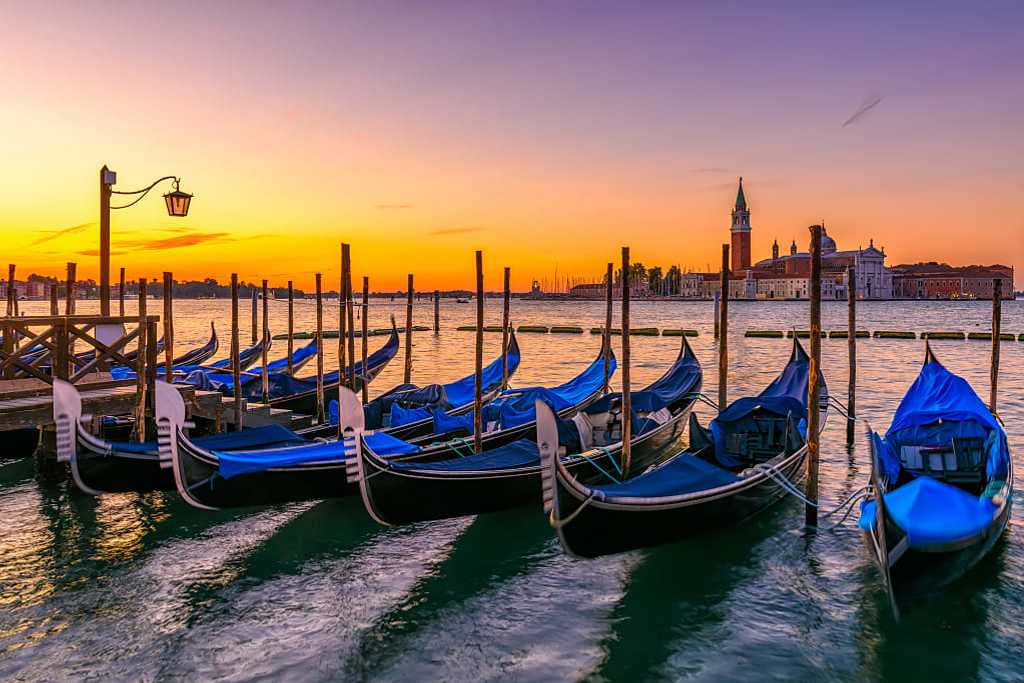
©zicasso.com
Gondola Serenade
Venice is undoubtedly one of the most romantic cities in the world. If you are traveling as a couple, a gondola serenade, perhaps in the evening at sunset, could be one of the most exciting and unforgettable memories to take away.
And this, if you want to travel by gondola, is the best way to discover the city’s dreamy and unique atmospheres of this attraction.

©paesionline.it
Bridge of Sighs
Sad and evocative at the same time is the famous Bridge of Sighs, located a few steps from St. Mark’s Square.
Created to connect the New Prisons to the Doge’s Palace, it owes its name to the prisons since it was here that future prisoners could sign one last time before being interned.
Venice between events, anniversaries, and entertainment
But Venice is not only this. Behind the classic tourist tour of monuments and roads to travel, there is a whole world behind which to be experienced intensely.
Shopping streets and unmissable events
In all the narrow streets and alleys of Venice, there are illuminating shop windows and small shops; the main shopping street is Le Mercerie, between St. Mark’s Square and Rialto Bridge; the most famous jewelers are under the arcades of St. Mark’s. The symbol of Venice, the Mask is sold almost everywhere throughout the city, from the most expensive to the simplest that only serve as souvenirs.
Take advantage of the famous Rialto Market with fruit and vegetables for food and wine products.
What makes it famous all over the world is its fantastic Venice Carnival, which dates back to the tenth century and is considered an essential Italian carnival event of the year, and the Historical Regatta, a parade of boats – including the splendid gondolas – that have made the history of the city.
The famous “Venice Film Festival” is hugely well-known, which takes place every year in September. It has national and international value and attracts many visitors and tourists.

©theromanguy.com
The streets of the flavor of Venice
Venice has a unique food scene with restaurants, taverns, and bars offering excellent cuisine. Try the local finger food, chicchetti, and seafood instead of pizza. Risotto, polenta, and pastries are also must-try. Veneto produces wines like Merlot, Cabernet, Riesling, and Chardonnay, while grappa is associated with Bassano di Grappa. There are bars and clubs where young people flock for excellent drinks, aperitifs, and much more. The most lived-in neighborhood is Dorsoduro.
What to see in Venice in one day
A day trip to Venice can be the right opportunity to discover the main treasures of the city.
The obligatory stops on your tour are:
- Doge’s Palace (book in advance to avoid long queues);
- St. Mark’s Basilica and a walk in the square of the same name;
- Boat trip on the Grand Canal to admire the grand palaces that overlook it;
- Traditional photography from the Rialto Bridge;
- Visit the Accademia Galleries, which house the works of great masters.
What to see in Venice in two days
Two days is short, but you can admire several attractions if you optimize your time.
Day 1: The first fixed stops are the area of Cannaregio, which is home to the oldest Jewish Ghetto in Europe, and the Rialto Bridge; then move to St. Mark’s Square to get a closer look at the Clock Tower, the Basilica, and the Doge’s Palace. Continue to the Bridge of Sighs and head to the Accademia Galleries to contemplate masterpieces by Titian, Tiepolo, and Lotto. Cross the Ponte dei Pugni and linger on the Scalzi bridge that overlooks the Church of Santa Maria di Nazareth. End the day with a panoramic tour of about an hour by Vaporetto.
Day 2: On the second day, a gondola ride, a stroll through the shopping streets, and a visit to Palazzo Venier dei Leoni (Grand Canal) await you, which houses an extensive collection of paintings (some signed by Picasso). Your holiday is only complete if you taste some specialties of the local culinary tradition (sardines in saor, codfish) in a trattoria in the Canneregio area. Finally, we suggest you stay in the Castello area because there are several accommodation facilities at really affordable prices.
What to see in Venice in three days
A 3-day holiday can be enough to discover the many wonders of Venice.
Day 1 – Start your tour with a walk in the city’s heart: walk towards St. Mark’s Square, cross the Scalzi bridge (in front of the train station), and continue towards Rialto to take the ritual photo on the Lagoon. Cross the Bridge of Sighs, look at the Palazzo delle Prigioni, and linger in the adjacent Doge’s Palace (book your visit online to avoid long queues). Then visit St. Mark’s Basilica, the Clock Tower, and the Island of San Giorgio Maggiore (reachable by Vaporetto in a few minutes). Before continuing, take a lunch break at the ‘Ristorante alla Basilica’ (Calle degli Albanesi); in the afternoon, a dive into the Venetian fashion of the ‘700 awaits you at Palazzo Corner Mocenigo (San Polo).
Day 2: The next morning frees you to a complete tour of the islands (Murano, Burano, and Torcello), while in the afternoon, you can go to the Gallerie dell’Accademia to retrace the history of Venetian painting from the fourteenth to the eighteenth century.
Day 3: On the third day, after taking a gondola ride, go to the Cannaregio district to admire palaces, churches, monuments, and the Jewish Ghetto. Finally, we suggest you stay in San Polo because it is near the most important tourist attractions and is not far from the train station.
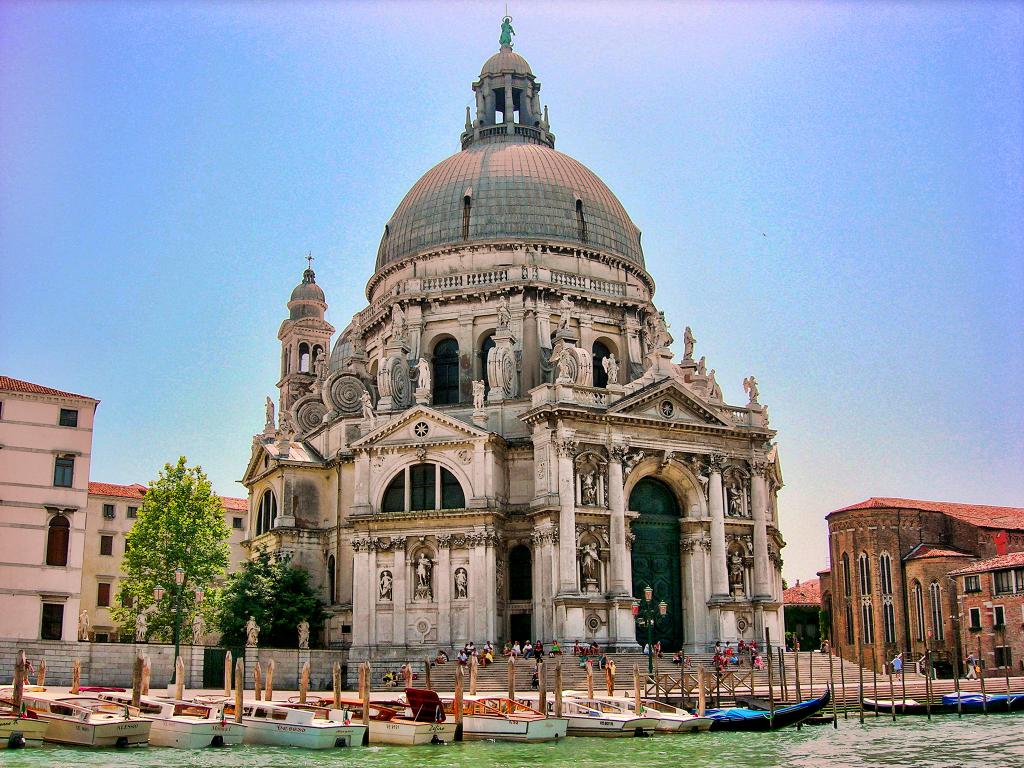
©gpsmycity.com
Free Attractions in Venice
Venice boasts countless treasures, and some are accessible free of charge.
Here are the following sights: the Basilica of Saints John and Paul and that of Santa Maria delle Salute, followed by the Murano furnace, the Marciana Library, the State Museums, and the Scala Contarini Del Bovolo with an open view over the rooftops of Venice.
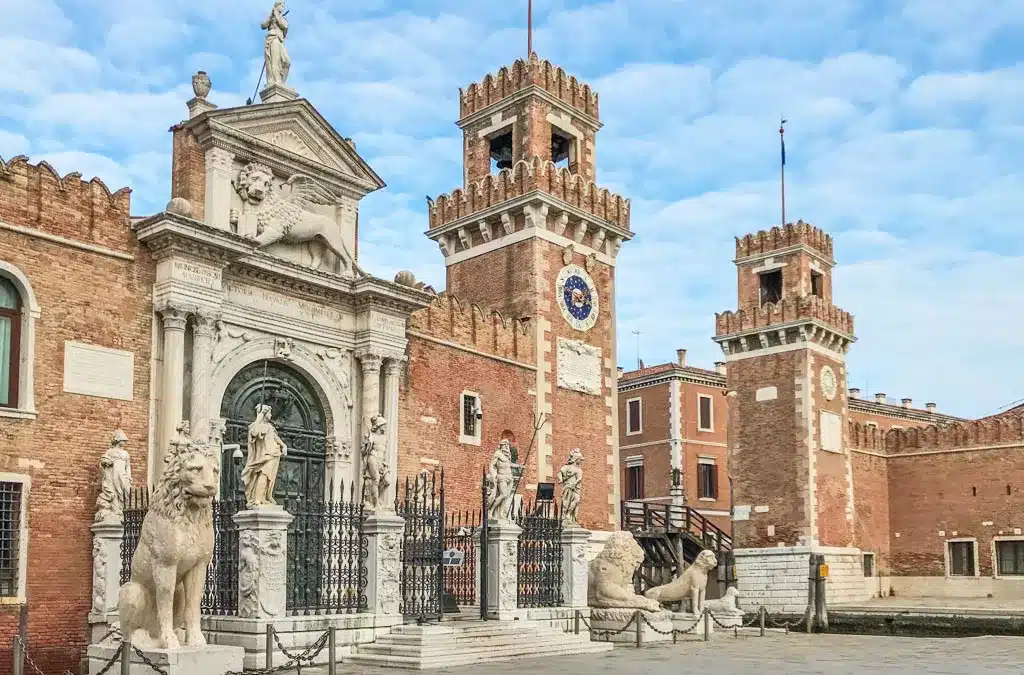
©josetteking.com
Unusual Attractions in Venice
Venice boasts many wonders, but some places have yet to be discovered.
The Castello district is, for example, the most authentic neighborhood, and a walk with a camera at hand is a must, followed by the Arsenale (the area where ships were built) and the vineyards of the Doges, who gave Dorona (a wine loved by the nobility). Or you can even visit the part of the Ghetto where famous courtesans like Veronica Franco lived. As you know, her life story was made into the movie Dangerous Beauty.
What to see in Venice – Final words
Firstly, we have only included a small list of Venice’s attractions, which is vas; therefore, we’d like to open the discussion with the question, what attraction did you visit?
Take a look at
References and sources:
Photo credits:
Feature photo Credits: picjumbo.com

